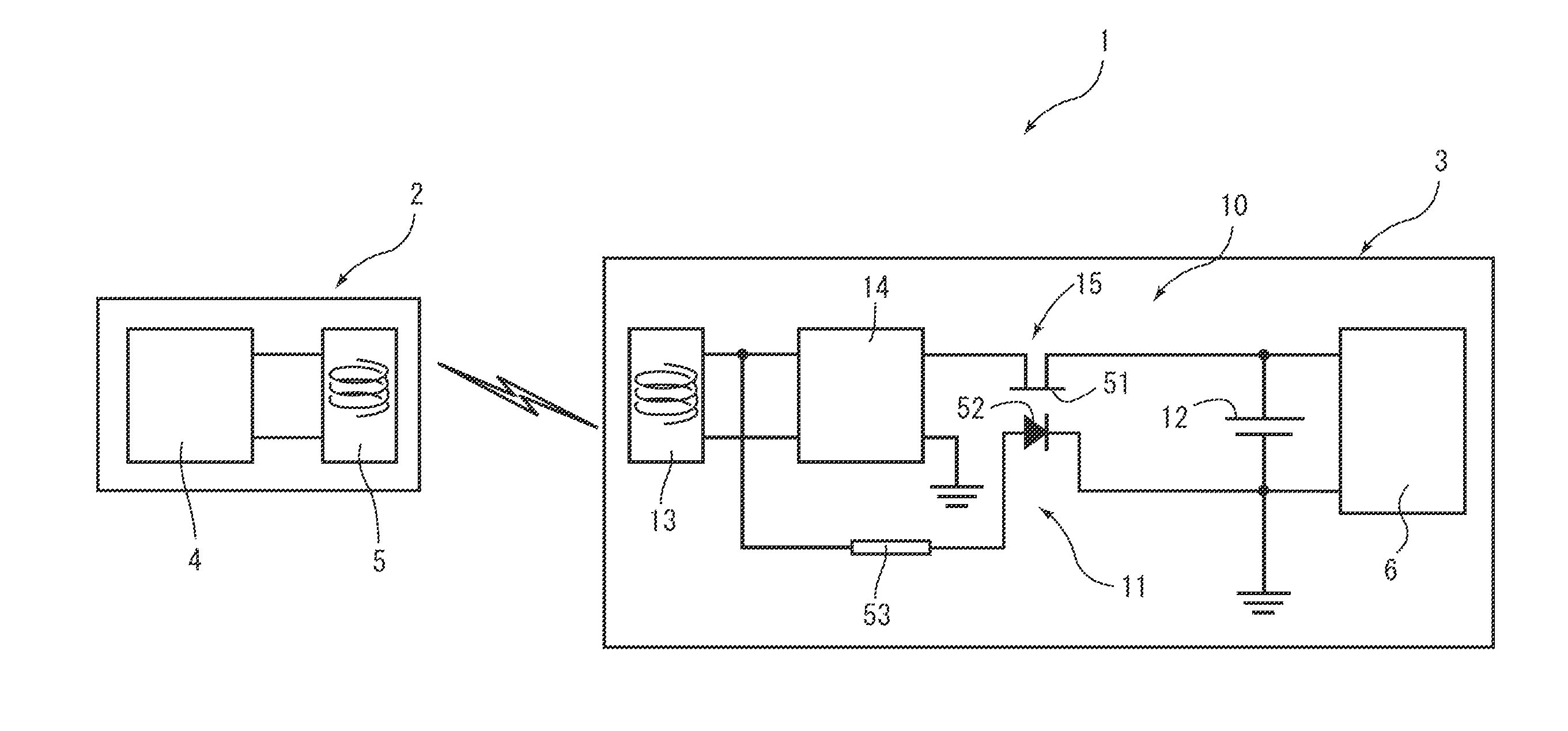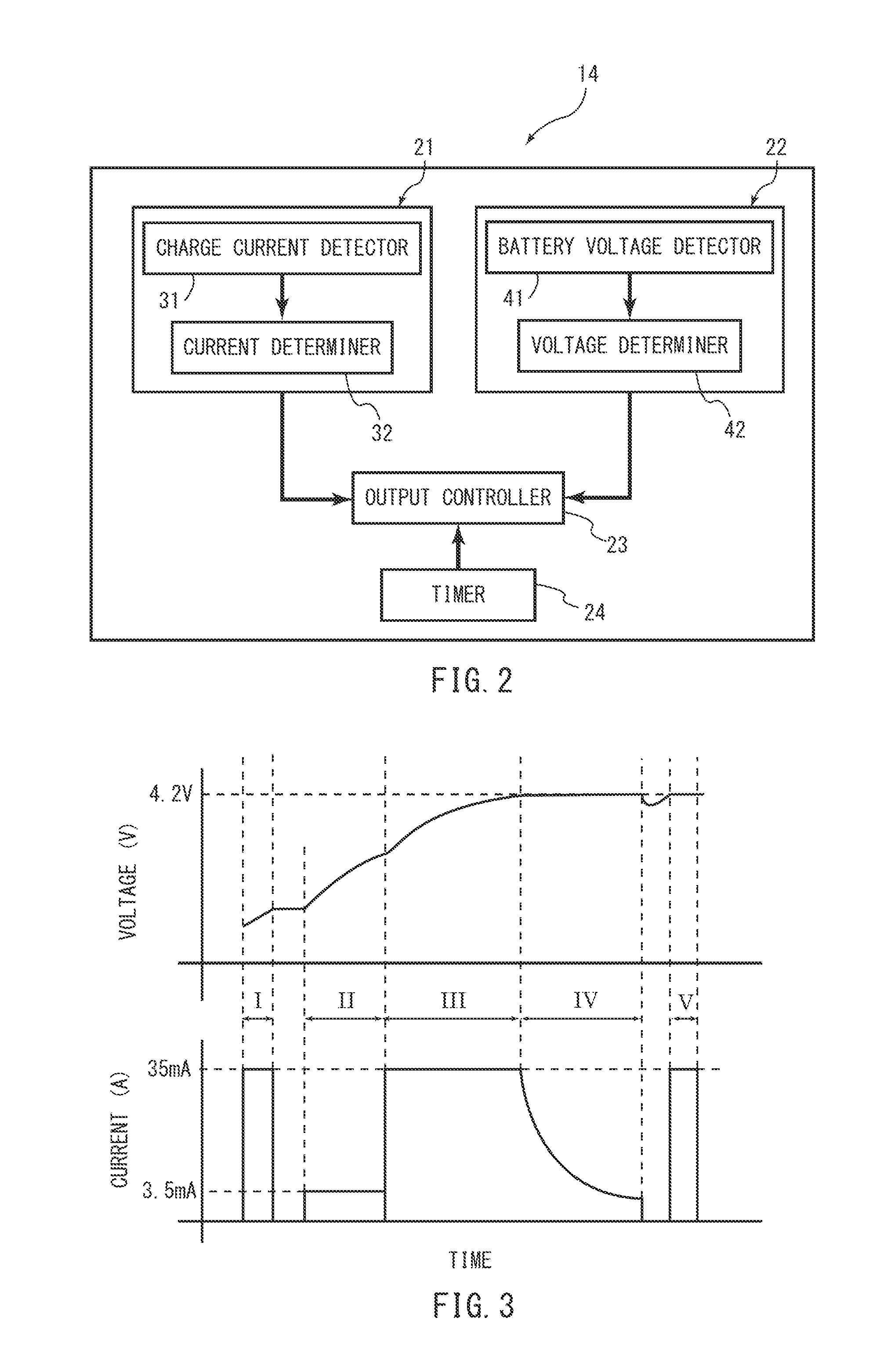Charging unit and electrical device provided with the same
a charging unit and electrical device technology, applied in the direction of emergency power supply arrangement, safety/protection circuit, transportation and packaging, etc., can solve the problems of unnecessari consumption of battery power and consumed power stored in the battery, and achieve the effect of preventing the consumption of battery power
- Summary
- Abstract
- Description
- Claims
- Application Information
AI Technical Summary
Benefits of technology
Problems solved by technology
Method used
Image
Examples
first embodiment
Advantages of First Embodiment
[0063]Thus, in this embodiment, the relay 15 that electrically disconnects the charge controller 14 and the battery 12 when the battery 12 is not being charged, is provided between the charge controller 14 that controls charging of the battery 12, and the battery 12. As a result, power in the battery 12 can be prevented from being unnecessarily consumed due to the leakage current of the charge controller 14 when the battery 12 is not being charged.
[0064]Also, in this embodiment, the relay 15 includes the switch 51 that is put into the conducting or non-conducting state, depending on light, and the light emitter 52 that emits light when a current flows through the power receiving coil 13. As a result, when the battery 12 is not being charged, i.e., a current is not flowing through the power receiving coil 13, the light emitter 52 does not emit light, and therefore, the switch 51 can electrically disconnect the charge controller 14 and the battery 12. The...
second embodiment
Advantages of Second Embodiment
[0073]Thus, in this embodiment, the transistor 61 that is put into the conducting state when the voltage of the output side of the power receiving coil 13 is higher than or equal to the threshold, and is put into the non-conducting state when the voltage of the output side of the power receiving coil 13 is lower than the threshold, is provided between the charge controller 14 and the battery 12. As a result, when the battery 12 is charged, i.e., the power feeding coil 5 of the charger 2 causes the voltage of the output side of the power receiving coil 13 to be higher than or equal to the threshold, the transistor 61 can be put into the conducting state, so that the battery 12 can be charged. On the other hand, when the battery 12 is not charged, i.e., the voltage of the output side of the power receiving coil 13 is lower than the threshold, the transistor 61 can be put into the non-conducting state. Therefore, in the configuration of this embodiment, a...
third embodiment
Advantages of Third Embodiment
[0079]Thus, according to this embodiment, the diode 71 that allows only current flow from the charge controller 14 to the battery 12 is provided between the charge controller 14 and the battery 12. As a result, the diode 71 can block current flow from the battery 12 to the charge controller 14. Therefore, power in the battery 12 can be prevented from being unnecessarily consumed due to the leakage current of the charge controller 14.
[0080]In addition, in the configuration of this embodiment, it is not necessary to drive or control a switch or the like. Therefore, a circuit having a simple configuration can be used to achieve the above advantages.
[0081]Moreover, with the above configuration, power of the battery 12 consumed by the charge controller 14 can be reduced irrespective of the conduction state of the power receiving coil 13 of the charging unit 70. In other words, even if the device is not placed far away from the charger 2, current flow from th...
PUM
 Login to View More
Login to View More Abstract
Description
Claims
Application Information
 Login to View More
Login to View More - R&D
- Intellectual Property
- Life Sciences
- Materials
- Tech Scout
- Unparalleled Data Quality
- Higher Quality Content
- 60% Fewer Hallucinations
Browse by: Latest US Patents, China's latest patents, Technical Efficacy Thesaurus, Application Domain, Technology Topic, Popular Technical Reports.
© 2025 PatSnap. All rights reserved.Legal|Privacy policy|Modern Slavery Act Transparency Statement|Sitemap|About US| Contact US: help@patsnap.com



